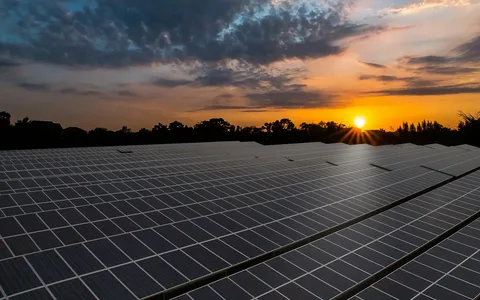The photovoltaic PV solar market has emerged as a cornerstone of the global transition to renewable energy. As countries seek to reduce their carbon footprints and combat climate change, solar energy stands out as a sustainable solution. However, the sustainability of the PV solar market encompasses more than just the reduction of greenhouse gas emissions. It requires a comprehensive evaluation of environmental impacts, long-term viability, and the role of policy in promoting clean energy solutions. This article explores these critical aspects to understand the true sustainability of the PV solar industry.
Evaluating Environmental Impacts
-
Life Cycle Assessment: To assess the sustainability of PV solar technology, it is essential to conduct a life cycle assessment (LCA). An LCA examines the environmental impacts of solar panels from raw material extraction through manufacturing, installation, operation, and end-of-life disposal. While solar energy generation produces minimal emissions during operation, the manufacturing process can be resource-intensive. This includes the extraction of silicon, the use of toxic chemicals, and energy consumption in production.
Research indicates that the environmental impacts of solar panels can be significantly mitigated through improved manufacturing processes and recycling technologies. For instance, advancements in the use of less harmful materials and energy-efficient production methods can reduce the carbon footprint associated with solar panel manufacturing.
-
End-of-Life Management: Another crucial aspect of the environmental sustainability of the PV solar market is end-of-life management. As the number of solar installations increases, so does the need to address the disposal and recycling of solar panels. Currently, many solar panels are sent to landfills at the end of their operational life, which raises concerns about waste management and resource recovery.
However, the development of recycling technologies presents a promising solution. Processes that can reclaim valuable materials, such as silicon, silver, and aluminum, not only reduce waste but also minimize the need for virgin materials. The establishment of effective recycling systems is vital for ensuring the long-term sustainability of the PV solar market.
Long-Term Viability
-
Technological Advancements: The long-term viability of the PV solar market is heavily reliant on technological advancements. Innovations in solar technology, such as improved photovoltaic materials, bifacial panels, and solar tracking systems, are enhancing the efficiency and effectiveness of solar energy generation. Continued investment in research and development is essential to drive these advancements forward.
Emerging technologies, like perovskite solar cells, promise even greater efficiency and lower production costs. If these innovations can be successfully commercialized, they have the potential to revolutionize the solar market and ensure its sustainability in the face of growing energy demands.
-
Economic Factors: The economic viability of solar energy is another critical factor influencing its long-term sustainability. The declining costs of solar panels and associated technologies have made solar energy increasingly competitive with fossil fuels. However, market volatility, fluctuations in financing, and economic downturns can threaten investments in solar projects.
Ensuring the economic stability of the solar market requires the establishment of robust financing mechanisms and incentives that encourage investment in renewable energy. Long-term contracts and power purchase agreements can provide the financial security necessary for developers and investors, fostering a sustainable growth environment.
The Role of Policy in Promoting Clean Energy Solutions
-
Regulatory Frameworks: Government policies play a pivotal role in shaping the sustainability of the PV solar market. Supportive regulatory frameworks can facilitate the deployment of solar energy by providing incentives, such as tax credits, grants, and feed-in tariffs. These measures can lower the cost barrier for consumers and businesses, promoting greater adoption of solar technology.
Conversely, inconsistent or restrictive policies can hinder market growth. Policymakers must create stable and predictable regulatory environments that encourage investment in solar projects. Engaging stakeholders, including industry representatives and environmental organizations, can help develop policies that balance economic growth with environmental sustainability.
-
International Agreements: The global nature of climate change necessitates international cooperation in promoting clean energy solutions. Agreements such as the Paris Accord aim to establish binding commitments for countries to reduce greenhouse gas emissions. These commitments often include specific targets for renewable energy adoption, which can spur investment in solar technologies worldwide.
By aligning national policies with international climate goals, governments can drive the transition to renewable energy and enhance the sustainability of the PV solar market. This alignment encourages collaboration among nations and fosters the sharing of best practices and technologies, further promoting global solar energy adoption.
-
Public Awareness and Education: Promoting public awareness and education about the benefits of solar energy is crucial for fostering a sustainable PV solar market. By informing consumers about the environmental advantages and economic savings associated with solar energy, policymakers can stimulate demand and encourage investment.
Educational programs that highlight the importance of renewable energy in combating climate change can galvanize public support for solar initiatives. Increased consumer demand can create a virtuous cycle of investment and innovation in the solar sector.
Conclusion
The sustainability of the PV solar market is multifaceted, requiring a careful evaluation of environmental impacts, long-term viability, and the role of policy in promoting clean energy solutions. While solar energy offers significant environmental benefits, challenges remain in terms of manufacturing processes, end-of-life management, and economic factors.
To ensure the long-term sustainability of the PV solar market, stakeholders must prioritize technological advancements, economic stability, and supportive regulatory frameworks. Policymakers play a crucial role in creating an environment conducive to solar energy adoption, while continued research and innovation can address existing challenges and pave the way for a cleaner, more sustainable future.
As the world grapples with the urgency of climate change, the PV solar market stands as a vital component of the transition to renewable energy. By fostering collaboration among governments, industry players, and consumers, we can unlock the full potential of solar energy and create a sustainable energy landscape for generations to come.



